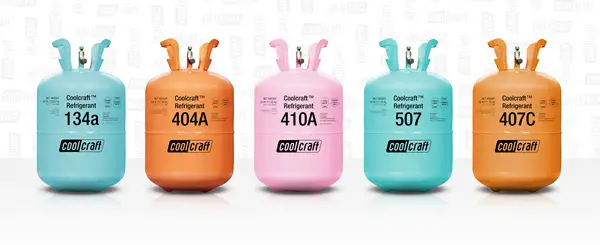Refrigerant vapor lines are the unsung heroes of your home’s comfort. They play a crucial role in your HVAC system by transferring heat, keeping you cool in the summer and warm in the winter. But what exactly are they, and why are they so important? Let’s dive in and explore the world of refrigerant vapor lines together!

Table of Contents
Types of Refrigerant Lines
Refrigerant Vapor Lines
Refrigerant vapor lines are the tubes that transport refrigerant in its gaseous state. Typically made from copper or aluminum, they have specific dimensions to ensure optimal heat transfer. Isn’t it amazing how such small components can make such a big difference in your home’s temperature?
Refrigerant Liquid Lines
On the flip side, refrigerant liquid lines carry refrigerant in its liquid form. Like their vapor counterparts, these tubes are commonly made from copper or aluminum and come in various sizes to suit different systems. So, next time you enjoy a cool breeze from your AC, remember these little tubes working hard for you!
Combined Refrigerant Vapor/Liquid Lines
Some systems use combined refrigerant vapor and liquid lines. These versatile tubes handle both states of refrigerant, making them a one-stop solution for certain applications. However, they may not be the best choice for every system, so it’s essential to weigh the pros and cons before making a decision.
Key Components of Refrigerant Vapor Lines
Compressors
Compressors are the heart of the refrigerant vapor line, pumping refrigerant through the system. They come in various types like reciprocating, scroll, rotary, and centrifugal compressors, each with its unique features. A well-functioning compressor keeps your home cozy and your energy bills in check.
Condensers
Condensers play a vital role in the refrigerant vapor line by turning hot vapor into a cool liquid. They come in different types like air-cooled, water-cooled, and evaporative condensers. These little powerhouses help to maintain the perfect temperature inside your home, no matter how hot it is outside.
Expansion Devices
Expansion devices control the flow of refrigerant and maintain the right pressure within the system. Thermostatic expansion valves (TXVs), capillary tubes, and automatic expansion valves (AXVs) are common types of expansion devices. Just like traffic cops, they keep things running smoothly and efficiently!
Evaporators
Evaporators are the last key component of the refrigerant vapor line, absorbing heat and turning the liquid refrigerant back into a vapor. There are various types, like bare-tube, finned-tube, and plate evaporators. They work together with the other components to keep your living space comfortable.
Click here for more articles on vapor refrigeration.
Refrigerant Vapor Line Installation and Maintenance
Proper Sizing and Selection
Getting the right size and type of refrigerant vapor line is crucial for optimum performance. Factors like system capacity, line length, and temperature conditions play a role in making the right choice. After all, no one wants a Goldilocks situation with their HVAC system, right?
Installation Best Practices
Proper installation of refrigerant lines is essential for a well-functioning system. This includes correct routing of the lines, adequate insulation, and secure support. By following these best practices, you can avoid common issues and keep your HVAC running like a dream.
Maintenance and Troubleshooting
Regular maintenance is key to keeping your refrigerant vapor lines in tip-top shape. Common issues like refrigerant leaks, blockages, and pressure fluctuations can be identified and resolved with timely checkups. A little TLC goes a long way in ensuring your home stays comfortable year-round!
Safety and Environmental Considerations
Refrigerant Safety
Proper handling of refrigerants is crucial for your safety and the environment. Be aware of risks and hazards associated with refrigerants, and always follow safety procedures and guidelines. Remember, safety first!
Environmental Impact of Refrigerants
Refrigerants can have negative impacts on the environment, contributing to ozone depletion and global warming. Regulations have phased out certain refrigerants, and environmentally-friendly alternatives are now available. So, let’s do our part to protect our planet while staying cool and comfy!
Conclusion
In conclusion, refrigerant vapor lines are essential for a comfortable home. By understanding their importance, proper installation, maintenance, and safety measures, you can enjoy a cozy living space without breaking a sweat. With ongoing advancements in refrigerant technology, we can look forward to even more efficient and eco-friendly HVAC systems in the future.